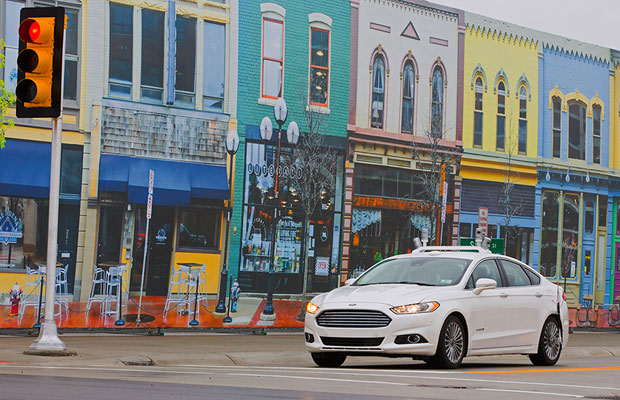U.S. Transportation Secretary Anthony Foxx on Tuesday introduced new federal guidelines for the emerging highly automated vehicle industry — including self-driving and semi-autonomous vehicles — creating a framework that will help drive one of the most important new sectors in the national economy.
Foxx, joined by Mark Rosekind, administrator of the National Highway Traffic Safety Administration, outlined the framework that will form new federal regulations to govern how the self-driving industry goes forward.
Efforts are under way to create safety and operational standards at a time when nearly every major automaker, technology and ride-sharing firm is racing to compete in the nascent multibillion dollar industry. Its promise is to provide new levels of mobility for millions of Americans who currently cannot access personal transportation.
The federal plan calls for a 15-point safety assessment that would create the framework for the design, manufacture, testing and deployment of automated vehicles. It would ensure that cars would be crashworthy, have a mechanism to react to vehicle failure, be protected against hacking, and be able to share data, among other things.
The guidelines would influence how the federal government would split up jurisdictional issues with the states over which issues would be handled at what level — for example, issues of licensing, insurance, enforcement, etc.
Federal safety regulations would apply to vehicles fully automated with software, for example, while states would be in charge of vehicles with a driver in control, Foxx said.
Setbacks, Steps Forward
The guidelines come at a critical time for the industry. A Tesla driver this spring suffered a fatal accident in a test-drive situation, and critics have charged that the company did not disclose the incident to regulators in the proper way.
Meanwhile, Uber recently began a major test of autonomous vehicle technology in Pittsburgh, where cars are picking up live passengers in real traffic conditions — a major step up for an industry that largely has been testing driverless cars on test tracks.
Federal guidelines are necessary to help ensure there is a level of uniformity in the industry, given that car manufacturers and technology companies will be dealing with multistate regulatory frameworks, and passengers likely will be traveling across borders on a regular basis.
“It is valuable to both the industry and to the consumer to have federal guidelines for autonomous vehicles,” said Jack Nerad, executive market analyst for Kelley Blue Book.
“Vehicles operate across state lines and, of course, are sold in every state and territory, so one set of regulations would be most efficient,” he told TechNewsWorld.
Lives Saved
Mothers Against Drunk Driving has advocated for ignition interlock laws and technology that automatically would disable a vehicle that was being operated by a drunk driver, said Colleen Sheehey-Church, national president of the group.
MADD and NHTSA earlier this year helped unveil a test vehicle using the Driver Alcohol Detection System for Safety, which blocks a car from starting when the driver’s blood alcohol reaches .08.
“Driverless cars have the potential to eliminate drunk, drugged and drowsy driving,” Sheehey-Church said. “A fully autonomous vehicle would stop a drunk or drugged driver simply because they can’t physically drive the vehicle.”
Autonomous vehicle technology could open up major opportunities for the disabled and elderly populations that lack the ability to drive themselves to the most basic life functions, including workplaces and recreational centers, said Henry Claypool, policy director of the Community Living Policy Center at the University of California, San Francisco.
“Autonomous vehicles hold enormous potential to improve the lives of millions of Americans, like me, who because of disability, age or other condition, are not able to enjoy easy access to personal transportation,” he noted.
Ford Motor expressed appreciation for the efforts of Foxx and the NHTSA to make advancements in this new technology. The company is looking forward to working with individual states on areas that complement the new guidelines.
“Importantly, the guidance will help establish the basis for a national framework that enables the safe deployment of autonomous vehicles,” Ford Motor said in a statement provided to TechNewsWorld by spokesperson Alan Hall. “Strides in this technology have the potential to improve safety on our roads and reduce congestion in urban areas.





















































